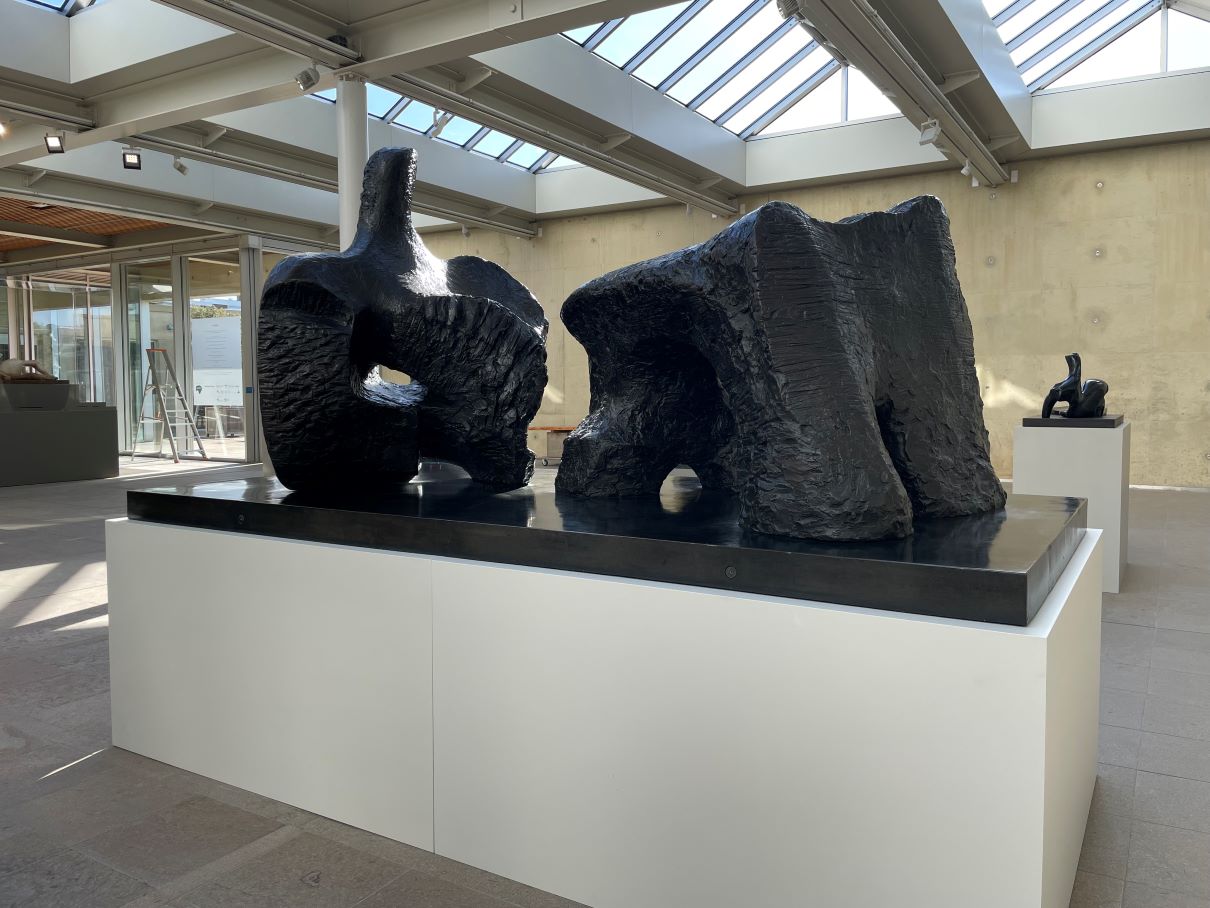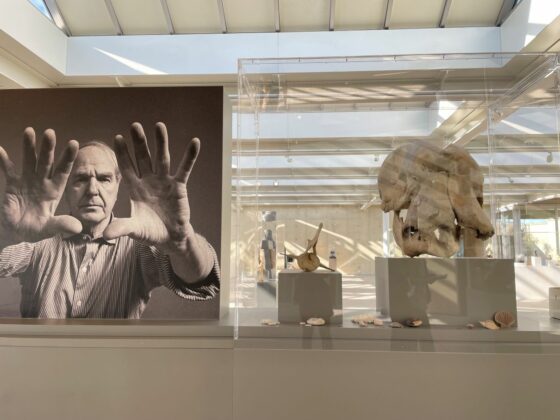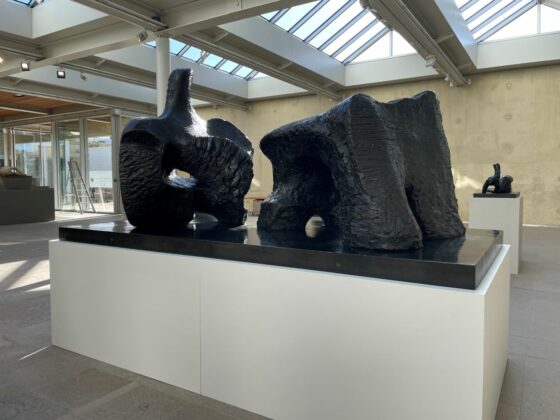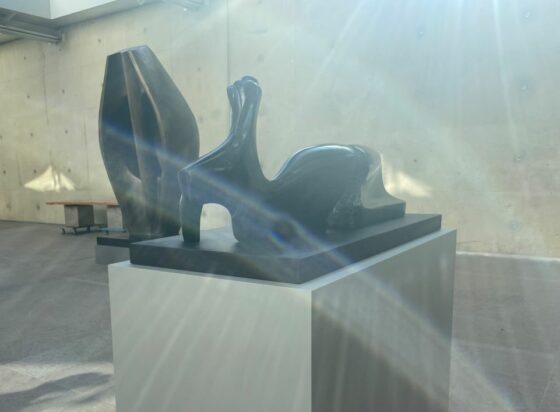Ever Moore: timeless English sculptures in the dunes of The Hague


Lit by the changing skies, more than 70 sculptures, maquettes and found objects from English artist Henry Moore fill an art gallery in The Hague.
Carefully placed in sunlight streaming through the skylights – and balanced to avoid crashing through the floor into the art depot below – the iconic sculptures form a new exhibition at Museum Beelden aan Zee.
Henry Moore: Form and Material, shows works inspired by nature, including mother and child figures and multifaceted statues such as the 1,200 kilo Three Way Piece, Broken Figure and Large Totem Head. Unusually, they are displayed inside and outside without labels apart from a simple number. ‘We just want people to look,’ explains curator Joost Bergman. ‘Otherwise, people just sit endlessly reading the text boards instead of looking!’
Looking again and looking at nature are the predominant themes of the exhibition, which opens on Friday and runs until October 22.
‘What Moore does most of all is to make us look: to look at the environment around us, at art but also at nature,’ said museum director Brigitte Bloksma at a press view.
‘He lived in the beautiful landscape of Perry Green [in Hertfordshire], he loved to walk, picked up stones and bones, and he played with them so you don’t know what you are seeing. He also played with material: plastic looks like a kind of bone, bone looks like plaster.’

The Yorkshire-born artist, who lived from 1898 until 1986, was a prolific creator of some 13,000 sculptures, drawings, tapestries and textiles in his long career. He was best known for his semi-abstract bronze sculptures but by including maquettes and materials from his studio, the exhibition explores influences from a piece of animal bone or a shell to North American totem poles and Mexican and African masks.
It also illustrates how he exploited the qualities of different materials, polishing black marble until it looks like plastic, or finishing plaster to resemble stone, explained curator Bergman. Sometimes the small sculptures feel more monumental and the huge ones more modest and this play is also clear in the show.
Sebastiano Barassi, head of collections and programmes at the Henry Moore Foundation, which has loaned the art, said that the 20th century sculptor still speaks to a modern audience. ‘What feels very relevant is this idea of nature as a source of inspiration in a world where our relationship with nature as mankind has been put to the test,’ he said.
‘There’s a circularity that is very appealing. He borrows objects and makes sculptures that he sets back in nature, so the figure itself becomes a landscape. That balance is quite topical today. A lot of cultures respond to Moore’s language.’

Although Moore is much displayed around the world, one thing that makes this exhibition unique is the museum space, which the curators said has a synergy with the art and with nature. ‘The museum lies in the dunes, it was built from the dunes, and has the architecture of a shell – which relates very nicely to our exhibition here of work by Henry Moore,’ said Bloksma.
The show was three years in the making and Bergman said it had only increased his admiration for the Englishman who continues to inspire artists. ‘We all know the story of Picasso and his women, but did Moore have any sharp edges?’ he said.
‘He wasn’t a drinker, he didn’t do drugs. He was just a really decent man, the man we should have sent to Mars to represent life on earth. He was eloquent, funny, modest, knowledgeable, cultured…he would have been the man to send into space to put in a good word for us.’
The exhibition opens on April 7 and runs until October 22.
Thank you for donating to DutchNews.nl.
We could not provide the Dutch News service, and keep it free of charge, without the generous support of our readers. Your donations allow us to report on issues you tell us matter, and provide you with a summary of the most important Dutch news each day.
Make a donation